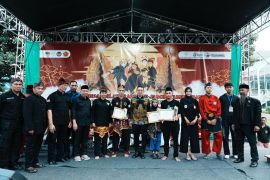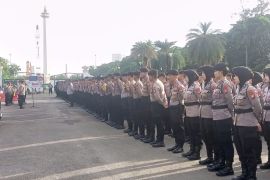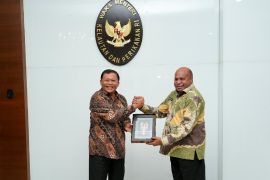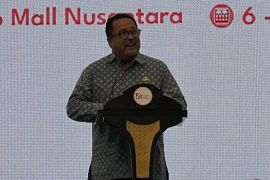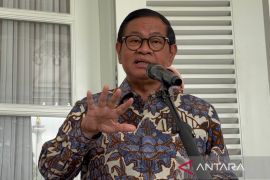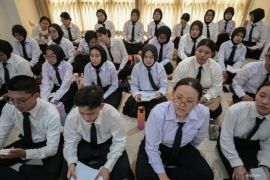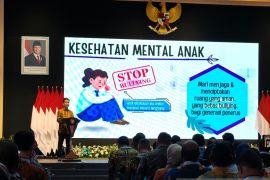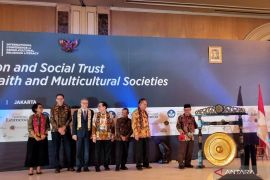The park is gaining hype on several social media platforms and is now one of the new most-visited interesting places in the capital.
Citizens interviewed by the media also acknowledged the benefits of the parks for their young ones. Residents no longer need to look for a remote location to keep their kids entertained.
Apart from being free, parents can unwind and rest, as it is easy to supervise their children in the park that was opened to the public by Jakarta Governor, Anies Baswedan, on April 23, 2022.
“With its many big trees in the park, it is a great place for a free picnic with family,” a visitor to Tebet Eco-Park stated recently.
“We can save money since children are able play freely and enjoy ethnic food provided by traditional local vendors,” the other visitor noted.
As an “oasis” in the midst of busy Jakarta, the park can be an enjoyable escape from hectic daily activities of citizens.
Bringing three main concepts, promoting ecological function, a place for socialization, and space for education and recreation, the Tebet Eco-Park becomes one of the preferred places for family gatherings during leisurely times, either picnic during the weekend or healing stress in the day times.
The park has two sides, north and south, which are connected by a long orange bridge symbolized by an infinite number eight (8) shape, which is why it is called the “infinity link bridge”.
This bridge -- which becomes an icon of the seven-hectare park -- along with the Thematic Garden area, and the wooden bridge have also been the most favorite spots for taking Instagrammable pictures, while its Plaza in the southern part can also be a good place for meeting with friends.
Started since 2018, revitalization of the park costed around Rp40 billion. Its color was chosen to represent Jakarta’s favorite football club, Persija.
Apart from that, the outdoor fitness area is ideal for walking or jogging, or walking around the beautiful thematic garden available there. Enriched by several meeting points, the park has several educative playing stations for kids. Children can also enjoy a variety of playing stations, from trampolines to see-saw (jungkat-jungkit), swing, climber, and sliding gizmos.
While it can also be a place for stress healing, the aesthetic area, with plenty of photo spots, attracts many visitors to enjoy the fresh air, engage in several sports activities, and relax.
On his Instagram account @aniesbaswedan, the governor stated the concept of Eco Park in the revitalization has a mission to restore its role from an ecological perspective: Tebet Eco-Park has altered the function of greenery at the park into a green open space, which also applied as a blue open space to address the problems of flooding and water crisis in Jakarta.
In other words, the Jakarta government has restored natural rocks and plants, garden animals, and for accessibility to natural features in the park, or what we call naturalization.
It all started with the aspirations of the surrounding residents. The natural "infinity connecting bridge" for instance, connects two separated north and south Tebet parks (Taman Tebet Utara and Taman Tebet Selatan).
The project is an effort to build a capital city that is not solely focused on urban development but is equally a source of contentment for its citizens.
Organized in the past four years, one program promoted by the Jakarta government is to add more public areas, also called the “third space” (“ruang ketiga”). The plan was ensured under the authority of the former education minister, as no less than 296 city parks, 29 urban forests, and 154 green lines were built.
The idea was to create a place that was merely a “garden” for plants into a “park,” an open area with more functional features that provides a location for studying, playing, and interacting between citizens. Events or festivals are held often, so that the park is not an empty field amid the swift and hectic metropolitan currents.
“That feeling of equality is what is needed in this city,” Anies noted. It is important to note that the governor is looking for a unified Jakarta, which means the "third space" should not be segmented or divided.
No less relevant than the parks in Jakarta are the 214 kilometers of walkways built, including the renewals of 10 sidewalks, or trottoirs, on the major streets of Jakarta.
In addition, another significant step is converting public routes into pedestrian areas, such as the underpasses or tunnels.
It takes consistency and commitment from a leader to establish green open spaces that are comfortable, safe, and accessible to all citizens in the midst of rapid skyscraper constructions.
The government is targeting a bigger percentage of green open spaces in Jakarta and has, so far, reached 9.2 percent.
For almost five years, Jakarta continues to strive for its progress and happiness of its citizens.
Apart from the Indonesian Happiness Index, which states DKI Jakarta is in the 27th position out of 34 provinces and based on criticism from opposing parties, data shows that the parks, sidewalks, and green open spaces built had increased the number of smiles on the faces of millions.
It is possible that the "third space" will set an example for other big cities in Indonesia, with forms of entertainment in open spaces being in high demand, especially after a pandemic.
It is time for the development of City 4.0, parks, urban forests, and comfortable sidewalks to become the trend of future metropolitan cities and not malls, skyscrapers, luxury cars, and motorbikes that fill the streets.
*) The views and opinions expressed on this page are those of the author and do not necessarily reflect the official policy or position of the ANTARA News Agency
*) The writer is an alumnus of University of Technology Sydney, Australia, and is currently teaching at the LSPR Communication and Business Institute, Jakarta
Related news: Ujung Kulon National Park prepares to reopen
Related news: Between park and garden in Jakarta
Related news: South Jakarta government to reopen 15 green open spaces
Copyright © ANTARA 2022

